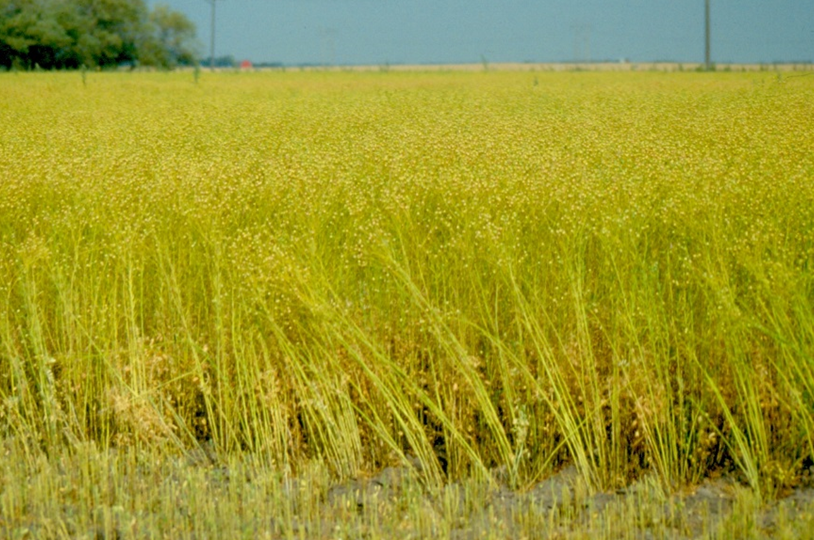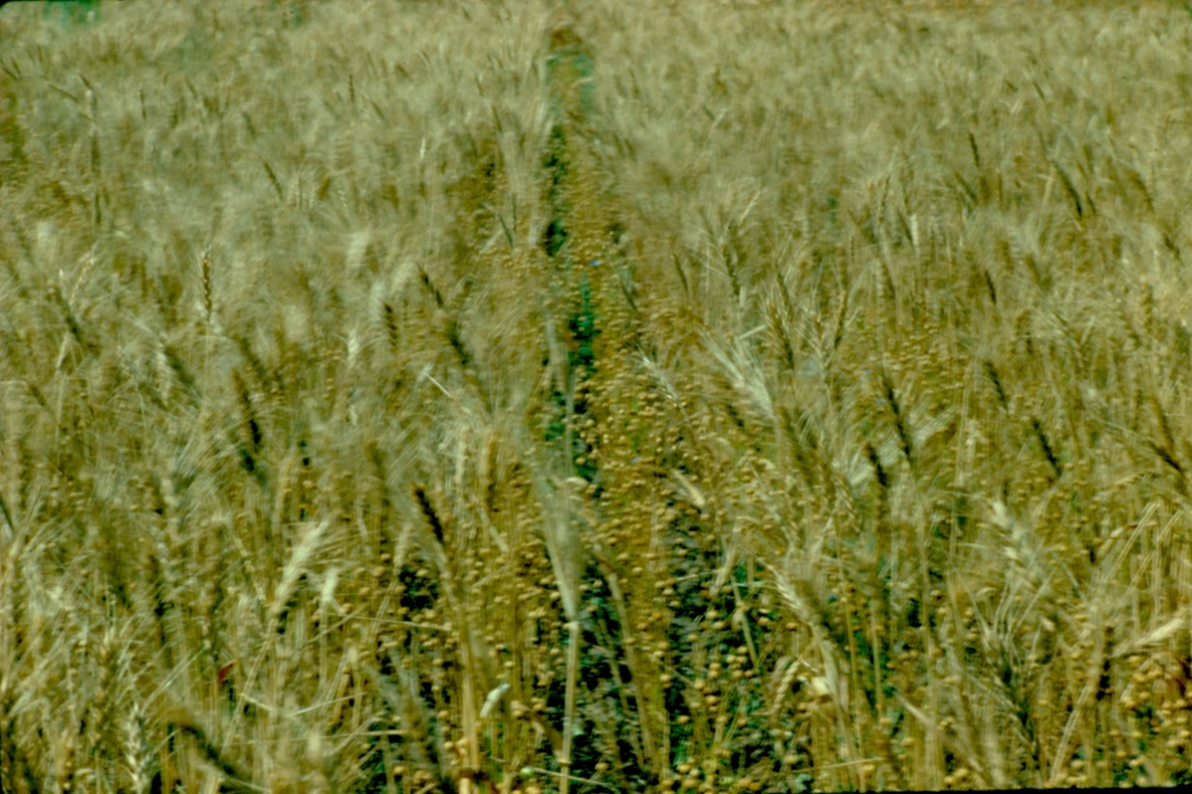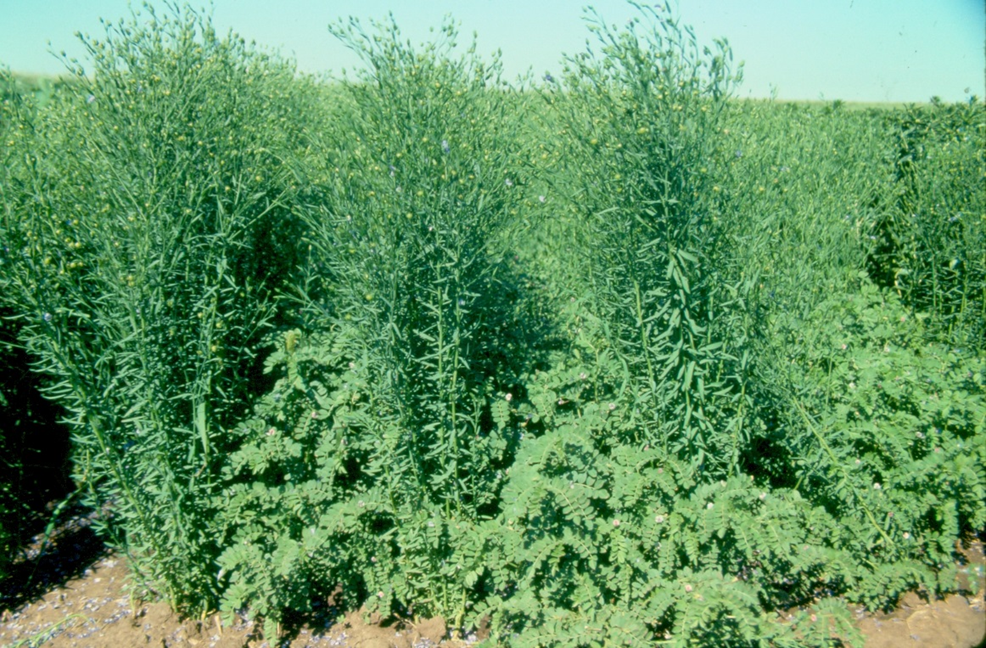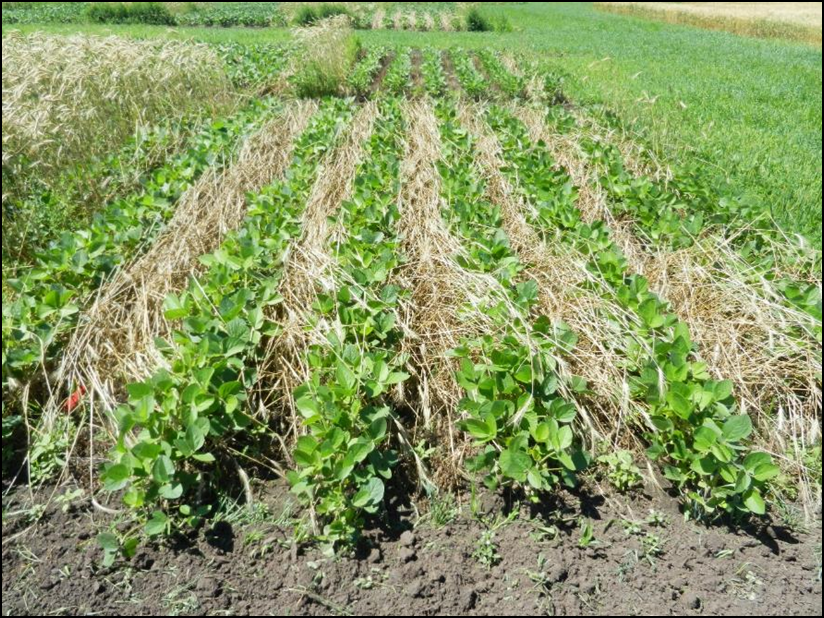Intercropping as a Crop Production System
A group of CREC agronomists recently participated in a research summit focused on a crop production approach that most would consider to be clearly outside the box. Intercropping was the production strategy discussed among a group of university and USDA researchers recently at the North Central Research Extension Center in Minot. Speakers from North Dakota, South Dakota and Canada presented information on research projects that address intercropping practices. Intercropping may be simply defined as a crop production system where two or more crops are grown together on the same field. The specifics of what constitutes a true intercrop will vary among those of us in agriculture. Some purists will define an intercrop as a production system where multiple crops are grown at the same time, in the same space and harvested together. Others will define an intercrop as any approach where more than one crop is grown on the same field within the same season.
I had the opportunity to present information on intercropping research that the CREC has conducted in the past and to the present time. The research and demonstration projects presented included crop production systems that we have defined as intercropping, multi-cropping, relay cropping and strip cropping. Much of the information presented was work that John Gardner, Steve Zwinger and myself conducted from 1989 to 1993. The crop mixtures were evaluated to explore possible benefits of an intercrop system. Potential benefits include an increase in total crop production, stabilized production, improved water and fertilizer use efficiency, reduced incidence of pests, full use of the frost-free season, enhanced soil biological activity, reduction in erosion, improved crop harvestability and others. Examples of the crop mixtures we evaluated were presented to summit attendees with example photographs and published research results.
The following crop combinations were among the mixtures discussed: spring wheat and flax; grain sorghum and pinto bean; flax and chickpea; spring wheat and field pea; flax and lentil; soybean and flax; safflower and flax; spring wheat and soybean; rapeseed and crambe; field pea and canola; corn and dry bean; and spring wheat and lentil.

Figure 1. Flax and lentil being intercropped on a field scale.

Figure 2. A producer field representing the spring wheat and flax intercrop.

Figure 3. Flax and chickpea planted as an intercrop in an alternate row arrangement.

Figure 4. Soybean planted into winter rye followed by terminating rye at anthesis.
In recent years, the CREC has conducted a number of research projects that can be categorized as intercropping. Among these projects are relay or double crop systems where soybean or dry bean are planted into a winter rye crop. In these systems, the main benefits targeted are reduced erosion and weed control, however a number of the other benefits referenced previously may also be attained.
Blaine G. Schatz
blaine.schatz@ndsu.edu
Director/Research Agronomist
Published CREC Intercropping Research Resources:
- Carr, Patrick M., John C. Gardner, Blaine G. Schatz, Steven W. Zwinger, and Steven J. Guldan. 1995. Grain Yield and Weed Biomass of a Wheat-Lentil Intercrop. Agron. J. 87:574-579.
- Carr, P.M., B.G. Schatz, J.C. Gardner, and S.F. Zwinger. 1993. Grain yield and returns from intercropping wheat and flax. J. Prod. Agric., Vol. 6, no. 1:11.
- Carr, P.M., B.G. Schatz, J.C. Gardner, and S.F. Zwinger. 1992. Intercropping sorghum and pinto bean in a cool semiarid region. Agron. J. 84:810-812.
- Ostlie, Mike, Steve Zwinger, Jasper M. Teboh, Greg Endres, and Ezra Aberle. 2017. Winter rye in soybeans: what you need to know. A Report of Agricultural research and Extension in Central North Dakota, NDSU Carrington Research Extension Center 58:35-36.
- Schatz, B.G., S. Zwinger, and P. Carr. Intercropping flax and lentil. 1992. Carrington Research Extension Center annual report. Vol.33, p2-3.
- Weiss, M. J., B. G. Schatz, J. C. Gardner, and B. A. Nead. Influence of a intercrop of canola and field peas on population levels of the crucifer flea beetle, Phyllotreta cruciferae (Goeze) (Coleoptera: Chrysomelidae). Environ. Entomol. 1994. 23:654-568.


